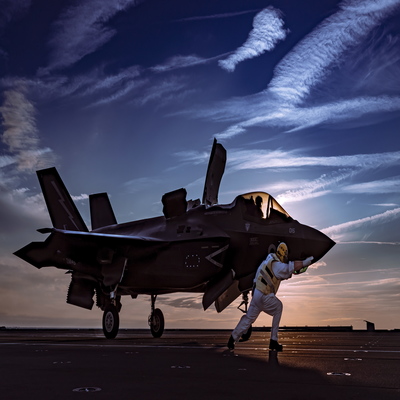The course is concerned with the design and development of ammunition systems. It aims to provide an understanding of the components of ballistics and the systems technology employed in ammunition, introducing the main types of ammunition from small arms through to large calibre guns and their modes of operation.
To do this, the course quantifies the internal and external ballistics of a gun and its ammunition including the forces and moments acting on a projectile in flight. The elements of ammunition design such as propellant mass, projectile mass and calibre and their subsequent effect on the performance of a gun are presented and the means to calculate simplified projectile mechanics including rigid body motion relating to translation, rotation and gyroscopic effects.
Lectures are delivered at MSc standard by Cranfield University academics, supplemented by Military Subject Matter Experts. The teaching is supplemented by static displays of military equipment to aid the teaching environment and includes an explosives range exercise to consolidate the knowledge.
At a glance
-
- Dates
-
- 30 Mar - 03 Apr 2026
- Duration5 days
- LocationNSWC Crane, Indiana, USA
What you will learn
On successful completion of this module a student should be able to:
Appraise the internal and external ballistics of a gun and its ammunition
Critically analyse the key points and significance of travel-pressure curves and their relevance to the performance of a gun
Calculate the energy transferred to a projectile in a gun barrel
Evaluate the effect of propellant mass, shape and size on gun performance
Assess the forces and moments acting on the projectile in flight and explain how a projectile may become unstable
Calculate simplified projectile mechanics including rigid body motion relating to translation, rotation and gyroscopic effects
Assess the main types of ammunition and their modes of operation
Core content
The course enables participants understanding of:
Internal ballistics,
Intermediate ballistics,
External ballistics,
Guided weapon aerodynamics.
Who should attend
The course is intended to provide engineers concerned with the design and development of ammunition with an understanding of the key technologies employed within the field of ballistics. The course would also benefit to those involved in requirements capture and procurement of ammunition and associated systems.
Location and travel
Read our Professional development (CPD) booking conditions.
